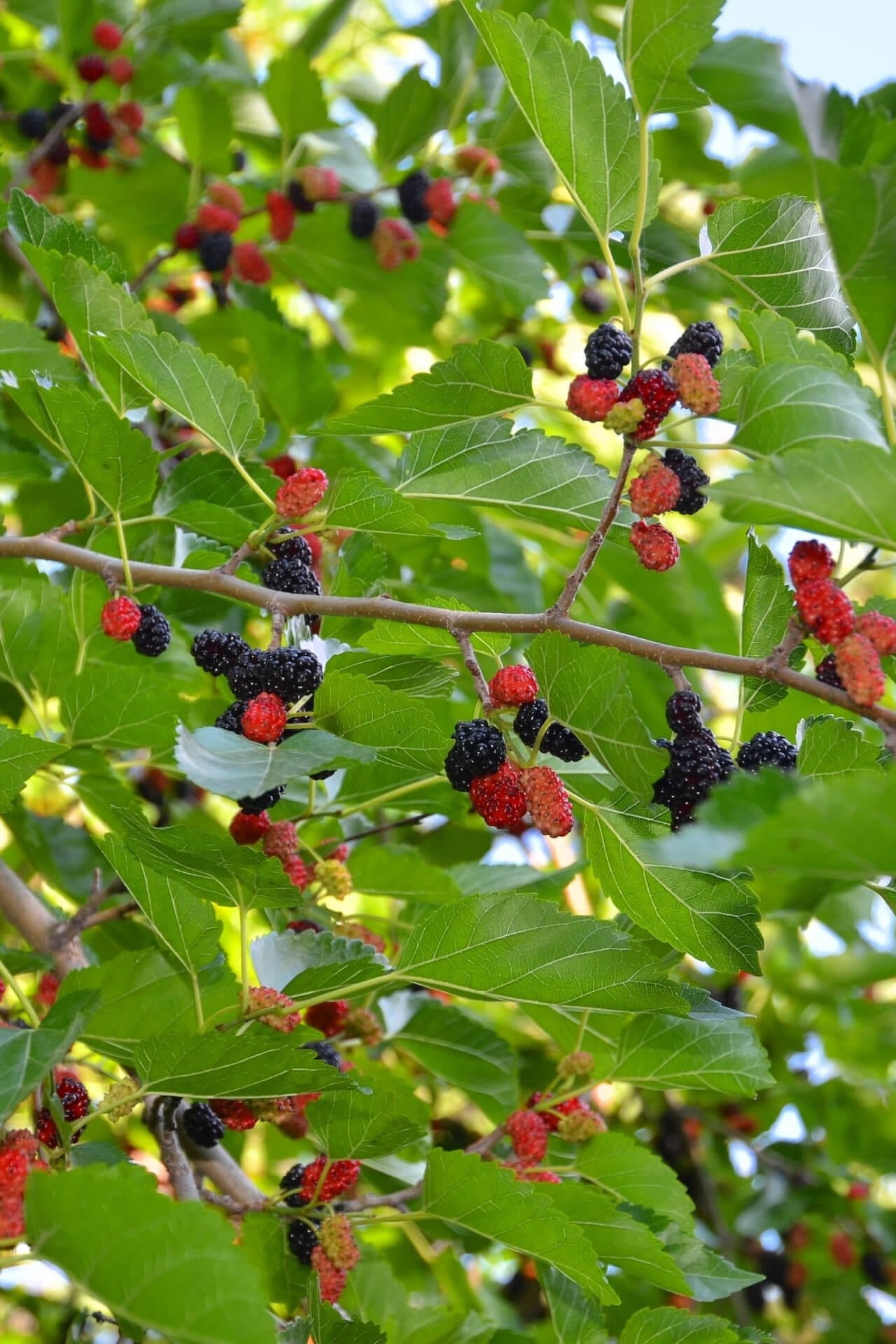Mulberry Tree
Mulberry Tree
| Order | Percentage Discount | ||
|---|---|---|---|
| 2-5 | 25% Off | ||
| 6-10 | 30% Off | ||
| 11-25 | 35% Off | ||
| 26-50 | 45% Off | ||
| 51+ | 65% Off | ||
Couldn't load pickup availability
5-7 Days
Over 25 Feet
Full Sun
4-8
Fruit
Bare-root
HI. CA
Mulberry Tree - Morus
Mulberry trees are a popular landscape choice due to their beautiful foliage and delicious fruit. They are also easy to care for, making them a great addition to any garden. Our tree is sure to add beauty and function to your landscape.
Appearance
It is deciduous and grows up to 30 feet tall and wide. It is rounded with a dense canopy of glossy green leaves that turn yellow in the Fall. In the Spring, the tree produces clusters of small, greenish-white flowers that give way to sweet, juicy fruit in the summer. When ripe, the fruit is dark purple or black and is a favorite of birds and people alike.
Growing Conditions For Mulberry Trees
The trees are adaptable to various growing conditions and are hardy in U.S.D.A. zones 5-9. They are open about soil type but require good drainage. Once established, the trees are drought-tolerant but benefit from regular watering during dry spells.
Maintenance
The trees require minimal maintenance once established. Trimming should be done in late winter or early Spring to remove damaged branches and shape the tree. The tree Spring also needs periodic thinning to improve air circulation and fruit production. Fertilizer is not usually essential, but a balanced fertilizer can be applied in Spring 2024 if desired.
Uses
Our tree is an excellent addition to any landscape. It can be used as a specimen, shade, or fruit tree. The delicious fruit can be eaten fresh or used in jams and other desserts. The tree also provides habitat and food for birds and other wildlife. The Mulberry tree is a beautiful and functional addition to any landscape. Our tree is easy to care for and will provide years of enjoyment with its delicious fruit and stunning foliage. Order now and start enjoying the benefits of this beautiful tree in your backyard.
This Is How Your Plants Will Look upon Delivery
Bloom/Foliage Color
Red
Shipping date depends on the date displayed and chosen when you order from the product's page.
We only accept returns on plants verified dead. If you think your plants have died, we offer a 1 year warranty, please use use this File a Claim Link to verify dead plants and start with return warranty process.




